
The one-stop-shop to hearing everything you need to know about what is happening in your fields this week.
This week’s featured agronomists are:
Easton Schuch – Le Seuer
Todd Anderson – Goodhue
Zach Hinsch – Wanamingo
Samantha Schoenfelder – Elgin
Luke Daninger – Ellsworth
Scroll down to hear from your local agronomist.
Weekly Agronomy Updates will be taking a break for the next month while the 2022 crop finishes out. We look forward to bringing you more insights as harvest starts!
WEST
Belle Plaine – Le Center – Le Sueur
 Easton Schuch
Easton Schuch
Our corn is making dough! (Pun intended) Our ears are transitioning out of milk stage (R3), into dough (R4), and leaving us waiting only on dent and black layer. Once we reach that, we can get to work on harvesting the crop we have spent all year working hard on. For those who want to go out and start some pre-harvest yield checks, here’s a quick reminder on how we can get a rough estimate on what things will look like:
 |
| Example= (16 x 40 x 31= 19,840 ) Then take 19,840 divided by 90= 220 bushels per acre |
 |
EAST
Pine Island – Cannon Falls – Goodhue – Lake City
 Todd Anderson
Todd Anderson
Late Season Soybean Disease Scouting
There are a bunch of soybean diseases that look similar while scouting at 55mph, so it is important to step out into the field to confirm which yield robbing disease you have. Doing so will assist in making the best seed and seed treatment decisions for your operation. While you are in the field, you might want to evaluate your weed control and come up with a plan on which weedy fields to combine last.
Sudden Death Syndrome
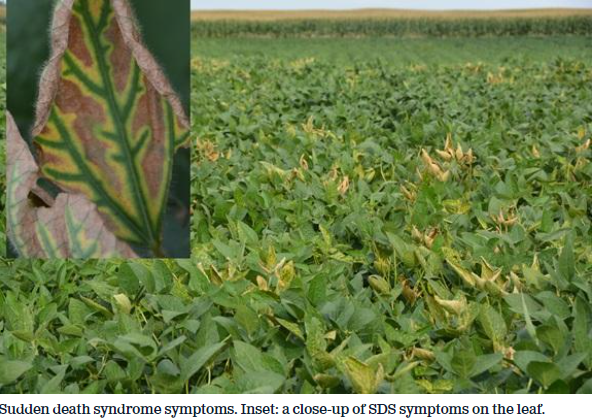 Sudden death syndrome (SDS) pathogen infects seedlings early in the season but symptoms do not develop until after the flowering growth stage. SDS symptoms start as small chlorotic spots on leaves. These quickly expand leading to large yellow blotches that eventually become necrotic (dead leaf tissue) between leaf veins, leaving green veins. Infected plants have rotted roots. Splitting the stem lengthwise reveals the browned cortex and white pith.
Sudden death syndrome (SDS) pathogen infects seedlings early in the season but symptoms do not develop until after the flowering growth stage. SDS symptoms start as small chlorotic spots on leaves. These quickly expand leading to large yellow blotches that eventually become necrotic (dead leaf tissue) between leaf veins, leaving green veins. Infected plants have rotted roots. Splitting the stem lengthwise reveals the browned cortex and white pith.
Brown Stem Rot
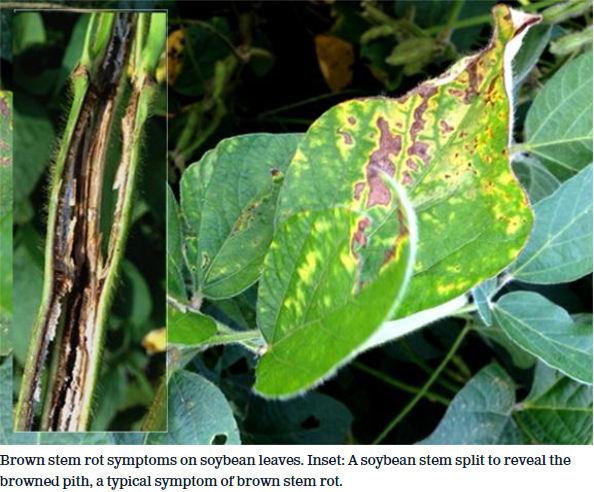 Brown stem rot is another disease that develops in soybean mid-to-late season. Plants infected by the brown stem rot pathogen show no foliar symptoms until early pod set. Leaf symptoms on diseased plants sometimes may not develop, depending on the environment. When leaf symptoms develop, leaves have yellow-brown blotches between veins. The best way to confirm brown stem rot is to split the soybean stem longitudinally. The presence of a dark brown discoloration of the vascular tissues is an identifying characteristic of brown stem rot.
Brown stem rot is another disease that develops in soybean mid-to-late season. Plants infected by the brown stem rot pathogen show no foliar symptoms until early pod set. Leaf symptoms on diseased plants sometimes may not develop, depending on the environment. When leaf symptoms develop, leaves have yellow-brown blotches between veins. The best way to confirm brown stem rot is to split the soybean stem longitudinally. The presence of a dark brown discoloration of the vascular tissues is an identifying characteristic of brown stem rot.
White Mold
 White mold develops from mid-season to late season. White mold can easily be diagnosed by the cottony-white mycelia on the stem and by the black, hardened fungal mass (sclerotinia) on and/or within the stem. This disease will develop under high-moisture and warm-weather conditions. Narrow row spacing, high fertility (especially from animal manure), and previous occurrence of white mold are the risk factors for white mold to develop.
White mold develops from mid-season to late season. White mold can easily be diagnosed by the cottony-white mycelia on the stem and by the black, hardened fungal mass (sclerotinia) on and/or within the stem. This disease will develop under high-moisture and warm-weather conditions. Narrow row spacing, high fertility (especially from animal manure), and previous occurrence of white mold are the risk factors for white mold to develop.
CENTRAL
Morristown – Wanamingo – Kenyon
 Zach Hinsch
Zach Hinsch
Crops in the area are looking well. We are wrapping up the last of our fungicide applications here this week and continuing to scout fields, evaluating decisions we’ve made this growing season. Tar spot has been the coffee shop talk in recent weeks and is something we should be monitoring until harvest. Be in touch with your local agronomist regarding any questions on tar spot.
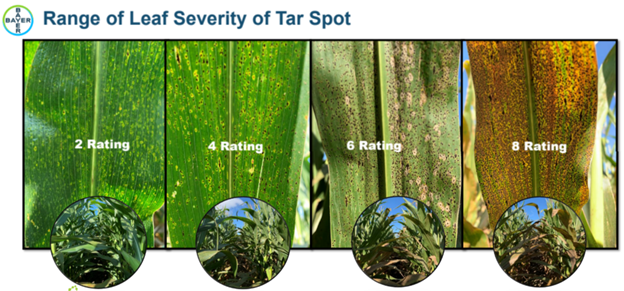
As we close out on the management decisions for our 2022 crop, we open the book to planning our 2023 crop. Evaluating spring soil samples and creating recs for fall fertilizer and lime will be taking place over the next month. Be sure to visit with your local agronomist to get a plan in play for fall, as it’s much easier to adjust a plan than shoot from the hip in the heat of harvest. Hope you all enjoy what we have left of summer!
SOUTH
Elgin – Lewiston – Stewartville

Samantha Schoenfelder
Summer is flying by which means it is time to start thinking about your fall nutrient plans! Before stepping back into the combine for another year, it is a great time to sit down with your Ag Partners agronomist and talk about what needs to happen as the crop comes off. We can help you make a plan for fall spreading of P, K, S, soil sampling and liming. It is a great idea to do this ahead of time as crop rotation, what you saw in your fields throughout the growing season, and field history can all have an impact on your plan for next year.
Lime is a very important part of our fall plans to improve and maintain the pH in fields. The ideal pH range is between 6.5 and 7.0. When the pH is not properly managed and maintained in a field, it can tie up available nutrients resulting in nutrient deficiencies. When nutrients are tied up due to low pH, fertilizer will only go so far without correcting the pH first. Only a portion of the lime is available to neutralize the soil in the first year, so planning to lime with your crop rotation can also be important. The ideal time to lime ground for alfalfa is two falls prior to planting the new seeding.
Reach out to your Ag Partners agronomist now to start planning for a successful 2023 growing season!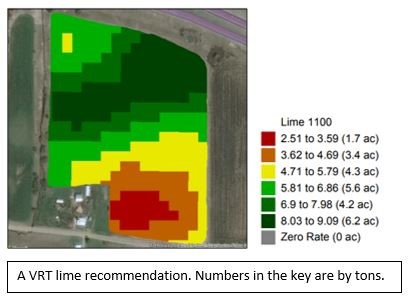
 |
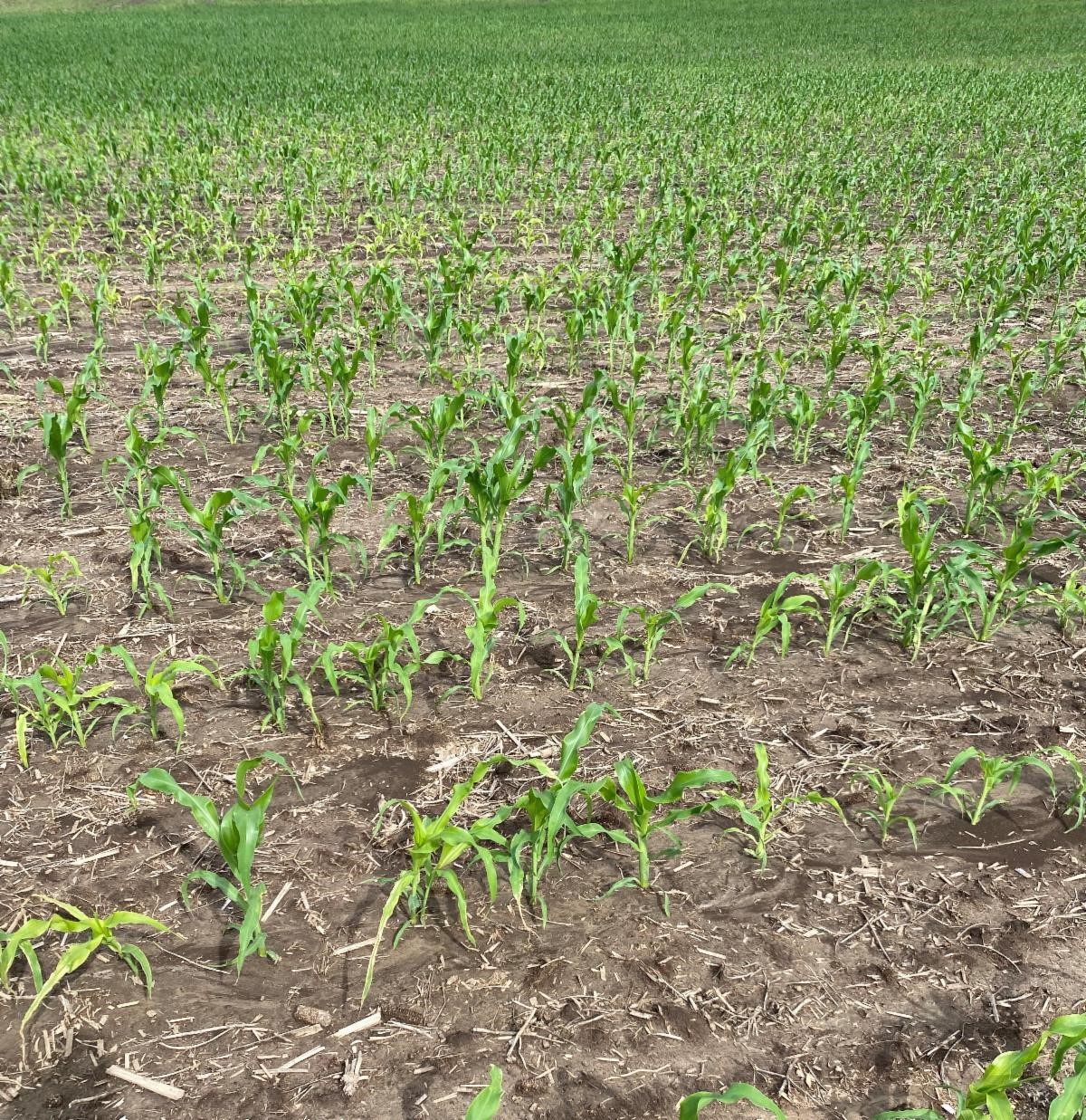
An uneven sweet corn field showing nutrient deficiencies due to low pH. |
WWAS
Ellsworth

Luke Daninger
Corn throughout the geography is largely at R3/R4 and soybeans are at R4. We are fortunate to get some timely rains the last ten days and it looks like we should have some more on the horizon later this week. In some really light/gravely areas of soybean fields, spider mites are rearing their ugly face. Hopefully, we get good rain that takes care of them and we don’t need to address them. As far as corn silage goes, a majority looks to be setting up for a harvest start sometime the week of September 12th. Make sure you are visiting with your nutritionist and/or agronomist to help target the right harvest moisture of 65-68%.
A few things to keep in mind as we head into fall and get ready for harvest:
- Now is a good time to make variable rate recs for fall and get plans sent
- Make sure grid sampling is up to date, and if they aren’t, fall is a good time to sample when the crop comes off
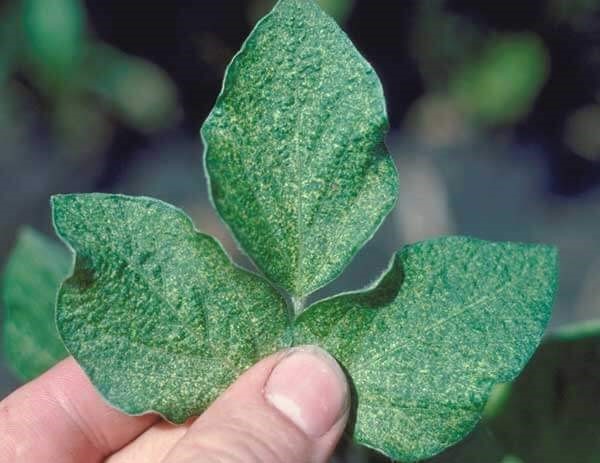
Two Spotted Spider Mite symptomology


